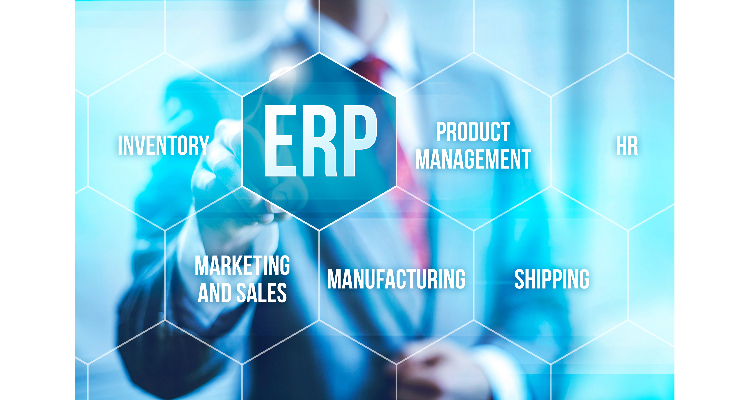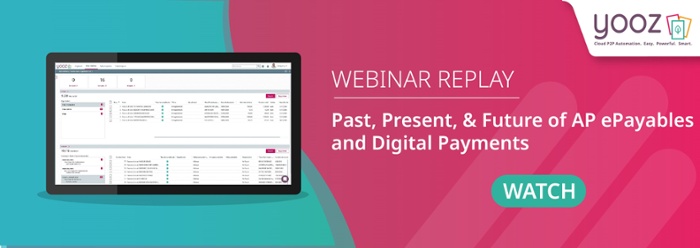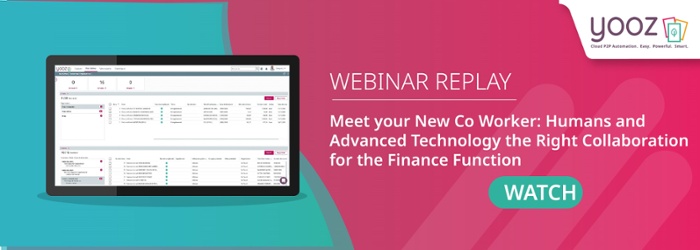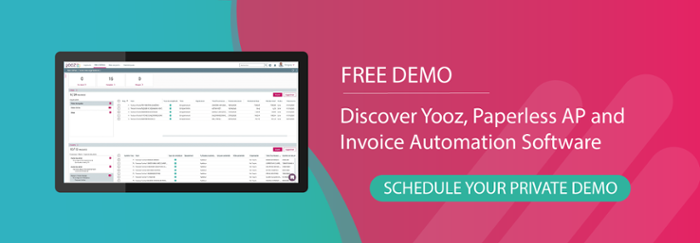In today's fast-paced landscape, staying competitive isn't just an option - it's a necessity. Without a distinct competitive edge, the number of dynamic new ventures eager to take over a slice of your market share can easily overshadow your presence.
The core of achieving and sustaining competitiveness lies in efficient, finely tuned operations (a fundamental truth that not all business management fully grasps). This is precisely where the game-changing potential of emerging technologies and ERP automation take center stage.
Enterprise Resource Planning (ERP) systems have emerged as indispensable assets in modern business, seamlessly unifying various functions within an organization. When combined with automated financial systems, companies can transform their operations and set new benchmarks for success.
This emergence shows no sign of decreasing. In fact, according to a 2022 report by Grand View Research, the global ERP software market was valued at $54.76 billion in 2022 and expected to reach $123.41 billion by 2030. That's a Compound Annual Growth Rate (CAGR) of 11%.
Let's look further into how ERP automation empowers organizations to optimize their financial workflows and attain a new level of operational excellence.

What is an ERP?
Enterprise Resource Planning (ERP) is a sophisticated software system designed to streamline and integrate various business processes from different departments within an organization. It serves as a centralized hub that manages crucial aspects like accounting, procurement, human resources, stock management, and more.
Essentially, an ERP system serves as a digital nervous system, ensuring seamless communication and coordination between many different departments.
What Does It Do?
An ERP system enhances operational efficiency by automating and integrating key business processes. It offers a single, unified platform for real-time data access and sharing across multiple departments, reducing manual tasks and errors. ERPS also provide advanced reporting and analytics for valuable insights into operations and trends.
Ultimately, an automated ERP system empowers businesses to optimize workflows, elevate customer satisfaction and drive sustainable growth.
Who Uses an ERP?
ERPs are used across a broad spectrum of industries and business sizes, from startups to multinational corporations. They are particularly valuable in industries with complex operational demands, such as manufacturing, retail, healthcare, and finance.
The adaptability of ERPs makes them essential tools for boosting productivity and competitiveness.
What is Enterprise Resource Planning Automation?
Enterprise Resource Planning (ERP) automation refers to the process of using technology to streamline and optimize the various tasks and process within an organization's ERP system. These include software tools, scripts, and workflows that perform various routine functions and repetitive tasks without manual intervention.
Examples of ERP Automation
- Data Entry and Processing: Automation can be used to input and process large volumes of data such as sales order, invoices, and inventory updates.
- Report Generation: Automated scripts can be created to generate regular reports on various aspects of the business, such as financial reports, sales performance, and production metrics.
- Financial Processes: This can include automating tasks such as Accounts Payable, Accounts Receivable, and Payroll
- Customer Relationship Management: Automation in CRM involves managing customer interactions, tracking sales leads, and automating marketing communications.
- Supply Chain Management: Automation can optimize processes related to procurement, demand forecasting, order processing, and logistics.
- Data Synchronization: Automation ensures that data is consistently and accurately synchronized across different portions of the ERP system.
- Compliance and Reporting: Automation helps ensure that the organization complies with regulatory requirements by generating necessary reports and other documentation.
- Notifications and Alerts: Automatic notifications can be set up to alert stakeholders about specific events, including low inventory, pending approvals, or other critical levels.
KEY POINTS
|
|
Automated Financial Systems: ERP System Automation at its Finest
The ERP automation revolution centers on automated financial systems, which are crucial in the complex world of ERP systems. They underpin all business activities, making upgrades, updates, and modernization essential for the smooth running and success of any organization.
Gone are the days of manual entry, tedious spreadsheet juggling, and late-night reconciliations. The integration of automated financial systems within ERP solutions has ushered in a new era of financial management, and it’s not just about digitizing numbers; it’s about transforming the very essence of financial operations.
Consider the traditional process of invoice management, for example. It was once a labyrinth of paperwork and approvals, but it can now be a streamlined digital workflow. Invoices are scanned, data is extracted using advanced technology such as Optical Character Recognition (OCR), and approval workflows now automatically follow predefined rules. This isn’t just a matter of convenience; it’s the most efficient way to work.
But the impact extends beyond efficiency alone; it’s about accuracy that reverberates throughout the organization. Automation ensures accuracy by eliminating the human error that inevitably accompanies manual processes. Invoices no longer slip through the cracks or suffer from misplaced decimals. Each financial transaction is now a flawless element of the whole, contributing to improved financial accuracy.
Furthermore, compliance is a standout feature. Staying abreast of shifting regulatory standards can be a formidable task however, automated financial systems are adept at adapting and can be customized to seamlessly embed the most current compliance requisites into their processes. This guarantees that your business conducts its financial operations in strict adherence to the latest regulations.
The Evolution of ERP Systems
In the early days, ERP systems were developed as the solution to a fundamental problem: the need for seamless management across diverse departments. With business processes often compartmentalized, integration was essential. ERP systems emerged as the conduit, bringing together different business functions under a single system, one digital umbrella.
Yet, the evolution didn't stop with integration. The transition from traditional to automated ERP systems carries a deeper significance. The entrance of automation technology and Artificial Intelligence (AI) marked a turning point - a point where mere integration turned into something even more remarkable.
Robotic Process Automation (RPA)
Robotic Process Automation (RPA) emerged as the leading element of this modern efficiency, reshaping operations by seamlessly handling repetitive tasks and elevating overall productivity. Integrated with ERP systems, RPA orchestrates workflows with unparalleled precision.
Tedious, error-prone tasks have been seamlessly transitioned to digital assistants, with a substantial 31% of businesses now automating at least one of these tasks. Previously laborious data entry has been streamlined, as systems effortlessly extract, validate, and input the information with remarkable ease.
Becoming Proactive
The transition from traditional to automated ERP marks a shift from reactive to proactive management. Through Machine Learning (ML), predictive analysis, historical data, market trends, and external factors are scrutinized to anticipate demand fluctuations. This foresight results preemptive supply adjustments, ensuring seamless operations and heightened customer satisfaction.
Furthermore, the once labor-intensive financial close process - which often consumed stressful hours - has undergone a transformation. Automated ERP systems have not only rendered this process more efficient, but also elevated its accuracy.
Ledgers are reconciled automatically to a central database, financial reports are generated at with the touch of a button, and compliance checkboxes are systematically checked. This means that decision-makers now have immediate access to real-time financial insights that significantly influence strategic direction.
Benefits and Disadvantages of ERP Automation
Benefits
Automating your ERP solution offers a range of universal benefits that go beyond the standard advantages of reducing errors, lowering costs, and ensuring real-time accuracy. These include:
- Improved Collaboration: ERP automation breaks down the barriers that often isolate departments within an organization. It dismantles data silos, once the bane of effective communications, allowing information to flow freely and creating a unified company where every department - sales, procurement, finance, etc. - all play a cohesive role.
For instance, when a customer places an order, the system initiates various actions across all relevant departments, ensuring that invoices are generated, shipments are scheduled, and payments are tracked. - Streamlined Inventory Management: If your current inventory management is inefficient and prone to inaccuracies, automated ERP systems can refine it to a much greater degree.
Through real-time tracking, data-driven insights, and predictive analytics, businesses can maintain much more precise inventories. This leads to reduced carrying costs, minimized stock shortages, and a seamless flow of goods that keeps customers satisfied.
When you recognize that 39% of customers have left a store or website without making a purchase due to an out-of-stock item, underscores the importance of this improvement. - Increased Agility: Business agility is a key factor that enables organizations to adapt and thrive, and automated ERP systems infuse agility into operations.
When market trends shift, they respond. When customer demands change, they adjust. By leveraging data-driven insights and predictive capabilities, businesses choreograph their responses to external dynamics. The result is a flexible, responsive organization that remains in sync with the changing market. - Greater Efficiency: Automated ERP systems elevate business efficiency by taking on repetitive tasks that once drained employees and consumed valuable employee time.
This frees workers from manual data entry tasks, allowing them to channel their skills into more strategic endeavors. The human touch can be used where it matters most - making informed decisions, nurturing customer relationships, and driving innovation.
Disadvantages
While ERP automation can bring numerous benefits to an organization, it is not without disadvantages. Here are a few of the top potential drawbacks:
- High Initial Costs and Implementation Time: Implementing ERP automation can be a significant investment in terms of both time and money. The costs associated with purchasing the software, hardware, customization, training, etc. can be substantial and the implementation process itself can be time-consuming. Both can potentially disrupt business operations.
- Complex Customizations and Integration: Tailoring an ERP system to meet specific business needs can be a complex process, especially trying to find the right level of customization without complicating the system. In addition, integrating the ERP system with existing software, legacy systems, and other third-party applications may require significant effort and resources.
- Employee Resistance and Training Needs: Employees that are accustomed to manual methods and existing processes may be resistant to adopting new automated processes. In addition, without proper training and support, there may be a notable decrease in productivity and potential errors in system usage.
- Dependence on Vendor Support and Potential Vendor Lock-In: Organizations may become heavily dependent on their ERP vendor for ongoing support, leaving them in a vulnerable position. Furthermore, switching to a different ERP system can be challenging and costly, potentially leading to vendor lock-in.
KEY POINTS
|
|
Why Would I Need an Independent AP Automation Provider?
Choosing an independent AP automation provider brings several benefits. They specialize exclusively in AP automation, ensuring a focused approach tailored for your needs. They are agile and adaptable, enabling quicker responses to evolving business needs and, in the case of Yooz, offer seamless integration with existing systems.
Independent providers also often offer cost-effective solutions, as they lack the overhead of larger vendors. This potentially results in lower costs and a greater return on investment.

The Importance of Seamless Integration
Seamless integration with any ERP system is crucial for businesses across various industries. It helps ensure:
- Data accuracy and consistency
- Efficiency and productivity
- Real-time information
- Improved customer service
- Cost reduction
- Streamlined business processing
- Adaptability and scalability
And much, much more.
In fact, seamless integration with an ERP system forms the backbone of efficient, data-driven decision-making. It enables businesses to adapt to changing circumstances with agility.
Fully Integrated Control with Yooz
Yooz recognizes the importance of having fully integrated control, offering over 250 native integrations with ERPs and other financial systems. This can drastically save time, costs, and impact the effectiveness of your Accounts Payable document management system.
Experience ERP Automation with Yooz
The journey to complete ERP automation isn't just a destination. Reach out for a personal demonstration on how efficiency, accuracy, collaboration, and agility can converge to drive business success.
FAQs
What is ERP Automation?
How ERP automation affects small business operations ?
- Improving Efficiency: Automating repetitive tasks frees up staff to focus on strategic activities.
- Enhancing Accuracy: Reduces errors associated with manual data entry and processing.
- Cost Savings: Minimizes operational costs through streamlined processes.
- Data-Driven Decisions: Offers real-time data and analytics for informed decision-making.
- Scalability: Supports growth without the proportional increase in overheads or resources. ERP automation makes small businesses more competitive, agile, and responsive to market changes.
How to automate ERP applications ?
- Integration: Leverage platforms like Yooz that seamlessly integrate with your existing ERP system to automate processes such as accounts payable, invoice processing, and financial workflows.
- Customization: Customize automation according to your business needs. Identify processes that are repetitive and rule-based, which can benefit the most from automation.
- Utilize Cloud-Based Solutions: Cloud-based ERP solutions often come with built-in automation capabilities that are regularly updated with the latest features.
- Training and Adoption: Ensure your team is trained on the ERP system and understands the benefits of automation. Adoption across all departments is crucial for maximizing the impact of ERP automation.
- Continuous Improvement: Regularly review and optimize automated processes to ensure they continue to meet the evolving needs of your business.
What are the key benefits of integrating AP automation solutions like Yooz with ERP systems for businesses of all sizes?









